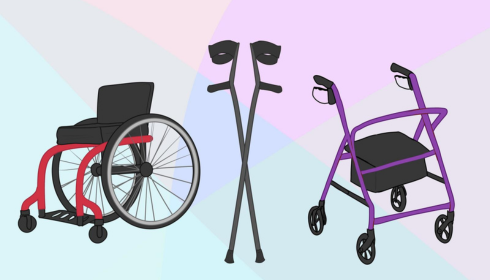
In today’s fast-paced healthcare world, doctors often find themselves weighed down by duties that distract them from their primary focus of caring for patients. The growing complexity of paperwork and the need to keep records can result in exhaustion and frustration among healthcare professionals. One creative solution to this issue is employing remote medical scribes who can assist doctors in streamlining their documentation processes and enhancing efficiency in clinical settings.
Remote medical scribe help doctors document patient interactions in real time. They work remotely, utilizing communication platforms to listen to conversations between doctors and patients and record information in electronic health records (EHRs). By managing the documentation tasks, virtual scribes enable doctors to concentrate on providing top-notch care without being sidetracked by duties.
Scribes’ responsibilities go beyond simple transcription. They are typically trained to comprehend jargon, medical specialties, and the intricacies of subjective, objective, assessment, and plan (SOAP) notes. This comprehensive knowledge allows them to document encounters accurately while capturing the essence and style of the doctor’s voice.
Therefore, doctors can rely on the accuracy and efficiency of capturing details during patient interactions.
Advantages of Using Remote medical scribe
Enhanced Efficiency: One key benefit of incorporating scribes is improved efficiency in clinical settings. This allows physicians to dedicate time to engaging with patients and less time on tasks, ultimately decreasing the overall workload. Studies indicate that virtual scribes can help doctors save 2 to 4 hours daily, enabling them to see patients or participate in meaningful activities.
Enhanced Patient Care; By utilizing scribes and gaining time, physicians can focus on providing better patient care. This leads to discussions about health issues with patients, increased attention to patient needs, and improved patient experience. Patients appreciate interactions with their healthcare providers. Having a scribe allows doctors to maintain eye contact and demonstrate empathy during consultations.
Mitigation of Burnout: Physician burnout is a concern in the healthcare field, often linked to administrative duties. Doctors can alleviate stress and boost job satisfaction by delegating documentation tasks to scribes. A contented physician is likelier to achieve patient outcomes and contribute positively to the workplace environment.
Remote medical scribe play a role in maintaining compliant medical documentation. They ensure that all essential details are captured in records, minimizing the chances of mistakes and oversights. Enhancing documentation quality improves patient care outcomes, promotes communication among healthcare professionals, and helps streamline billing processes.
Opting for medical scribe services can offer a cost solution for healthcare practices compared to hiring full-time staff internally. Many practices face constraints. Outsourcing scribe services can save employee salaries, benefits, and office space expenses.
Moreover, the enhanced efficiency of scribes can increase revenue by enabling physicians to see patients efficiently. When integrating scribes into practice, it is essential to follow specific steps. Healthcare organizations must assess the requirements and workflows that could benefit from scribe assistance. This involves analyzing the time spent on documentation tasks and identifying which types of visits would benefit most from scribe support.
After determining these needs, healthcare leaders should carefully select a virtual scribe provider through research. Training standards, security measures, and customer service should be considered when choosing the service for integration into daily operations. A trustworthy scribe service will ensure that scribes undergo screening and receive training in medical documentation practices and the practice’s specific workflows.
Training is crucial for integration. Physicians should be taught how to collaborate with the scribe, including communication protocols and expectations. This training helps bridge the gap between the scribe’s capabilities and the physician’s preferences, creating an environment that ultimately benefits care.
Challenges and Considerations
While remote medical scribe offer advantages, there are also challenges to consider. One challenge involves ensuring communication between physicians and scribes. Clear expectations, feedback, and check-ins to address any concerns or make necessary process adjustments play a role in optimizing this partnership.
Moreover, maintaining the security and confidentiality of data is paramount. Healthcare organizations must ensure their virtual scribe service complies with HIPAA regulations, which set guidelines for safeguarding information. A reputable service provider will have measures in place to protect confidentiality.
Lastly, achieving acceptance within the practice is essential for a transition. Physicians and staff may hold notions about the role of scribes. Teaching people about their work’s advantages and transformative impact can help overcome resistance and encourage an attitude toward incorporating scribes.
Future Prospects
The healthcare documentation landscape is rapidly evolving, with scribes expected to play a more significant role. As healthcare technology advances, the need for solutions that empower doctors will continue to rise. Virtual scribes offer a way to reduce paperwork burdens while improving interaction and care.
Additionally, as the system adjusts to include remote patient monitoring services, the role of remote medical scribe will expand. Scribes can assist doctors in documenting appointments, ensuring high-quality patient care regardless of the environment. The future looks bright for this support model, positioning scribes as vital contributors to empowering healthcare providers and enhancing patient outcomes.
Conclusion
Empowering physicians through scribes signifies a significant advancement in the healthcare field. By easing documentation pressures and administrative duties, virtual scribes enable doctors to concentrate on what matters—their patients. For example, professionals like Nathan Barz illustrate how integrating these tools can significantly enhance a physician’s ability to focus on patient care. In the changing healthcare landscape, doctors must adapt by incorporating tools like remote medical scribe. These technologies help physicians deliver top-notch care while prioritizing their health in the face of growing demands.



